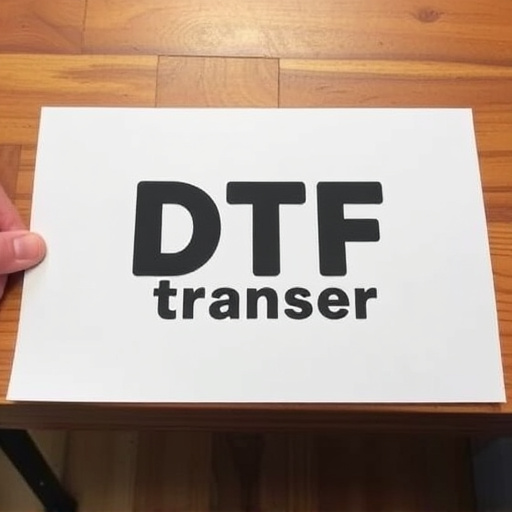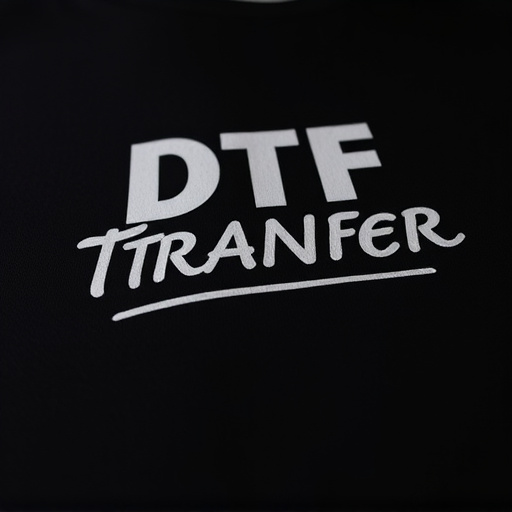DTF (Direct-To-Film) prints revolutionize printing with unparalleled precision, vibrancy, and versatility. This method, applied while warm, streamlines processes by eliminating lamination, allowing use on diverse materials like textiles, plastics, and metal. DTF offers dynamic design possibilities, professional finishes, fast turnaround times, and easy mistake correction, making it ideal for small-batch runs, on-demand printing, and efficient workflows. The process involves applying special ink directly to warmed substrates, enabling permanent affixing and precise color transfer. Right materials selection, including heat-sensitive films, ensures clean removal without residue. DTF prints also enable creative potential through temporary murals and interactive art pieces, fostering immersive experiences while adhering to best practices for successful transfers.
“Unleash your creativity with DTF (Direct-to-Fabric) prints—a game-changer in the world of textile design. This innovative transfer method allows for designs to be applied and removed with ease, offering a fresh approach to crafting unique garments and fabrics.
In this comprehensive guide, we’ll explore the benefits and creative possibilities of DTF Prints. From understanding the technology to mastering the removal process, you’ll discover how these transfers can simplify your design journey while ensuring optimal results.”
- Understanding DTF Prints: A Quick Overview
- Benefits of Using Transfers Designed for Removal
- The Process: Applying and Removing DTF Prints
- Choosing the Right Materials for Optimal Results
- Creative Applications and Design Ideas
- Best Practices for Ensuring Successful Removals
Understanding DTF Prints: A Quick Overview

DTF (Direct-To-Film) prints are a revolutionary technique that allows for precise and vibrant transfers, designed to be applied while still warm. This method captures intricate details and colors with remarkable accuracy, making it a favorite among professionals in various industries, from fashion design to signmaking. Unlike traditional printing methods, DTF technology eliminates the need for lamination, enabling a smoother application process.
The key advantage lies in its versatility; DTF Prints can be used on a wide range of materials, including textiles, plastics, and even metal surfaces. This accessibility has spurred innovation across sectors, as businesses embrace the efficiency and aesthetic appeal of DTF technology. By removing the need for intricate cutting or finishing steps, it streamlines production while ensuring high-quality results, making it a game-changer in the world of printing and design.
Benefits of Using Transfers Designed for Removal

Transfers designed to be removed while still warm, often referred to as DTF (Direct To Fabric) prints, offer several compelling benefits for both creators and end users. One of the key advantages is their versatility; these transfers can be applied to a wide range of fabrics, from t-shirts to tote bags, allowing for dynamic and adaptable design possibilities. Furthermore, their ability to maintain vibrancy in colors and detailed imagery means that final products can have a more professional and appealing finish, enhancing the overall customer experience.
DTF prints also streamline the production process by eliminating the need for complex equipment or lengthy preparation times. This not only reduces operational costs but also enables faster turnaround, making them ideal for small-batch runs or on-demand printing. Additionally, their ease of removal ensures that mistakes can be easily rectified, promoting a more efficient and less stressful workflow.
The Process: Applying and Removing DTF Prints

The Direct To Film (DTF) printing process involves applying a special ink directly onto a film or substrate while it’s still warm, allowing for precise and vibrant color transfer. This method is particularly popular among artists and professionals who work with custom graphics on various materials like fabric, paper, and plastic. To apply DTF prints, the warmed substrate is pressed against the printed film, ensuring the ink adheres permanently.
Removing the DTF print from the substrate is just as crucial as the application process. Once cooled, the print can be carefully peeled away, revealing a crisp and detailed design. This quick and relatively simple removal process makes DTF printing versatile for both small-scale projects and mass production. The ability to easily apply and remove these prints while they’re still warm streamlines workflows and enables efficient creation of high-quality, custom designs across diverse applications.
Choosing the Right Materials for Optimal Results

When creating designs intended for removal while still warm, selecting the appropriate materials is paramount for achieving optimal results with DTF (Direct to Film) prints. The key lies in choosing substrates that offer a balance between ease of removal and maintaining integrity during application. High-quality, heat-sensitive films designed specifically for DTF printing are ideal as they adhere well to various surfaces while allowing for a clean peel without leaving residue.
Factors like film composition, adhesive strength, and release agent properties significantly influence the overall success of the transfer process. Modern DTF films incorporate advanced technologies that enable them to withstand heat during application while providing a precise cut for clean lines. Additionally, considering the intended use and environment ensures compatibility with the chosen material, ensuring longevity and visual appeal of the transferred design.
Creative Applications and Design Ideas

The concept of transfers designed for removal while warm opens up a world of creative possibilities, especially in the realm of DTF (Direct to Film) Prints. This technique allows artists and designers to experiment with unique visual effects and interactive art pieces. Imagine creating temporary murals that can be easily lifted and relocated, offering a dynamic aesthetic for various spaces.
Designers can incorporate this method into their workflow by considering removable adhesives and special ink formulations. For instance, designing patterns or illustrations with intricate details that reveal themselves upon removal, creating an optical illusion. This approach could transform ordinary surfaces into engaging art installations, allowing for regular updates and a sense of surprise. Additionally, it enables the creation of interactive games or experiences where participants can physically engage with the art, making it a memorable and immersive event.
Best Practices for Ensuring Successful Removals

When it comes to transfers designed for removal while still warm, also known as DTF (Dry-Transfer) Prints, following best practices is paramount to ensure successful and efficient results. First and foremost, prepare your workspace by ensuring adequate ventilation. The process can release volatile organic compounds (VOCs), so a well-ventilated area is crucial for both safety and quality control.
Next, carefully inspect the DTF Print before attempting removal. Ensure it’s entirely dry to the touch, as any residual moisture can cause bubbles or lift parts of the design. Use a heat source like a hairdryer set on low to speed up the drying process without risking damage. Once dry, gently peel the transfer away from the surface, starting from one corner. Go slowly and apply gentle pressure to avoid tearing or smudging the design.














